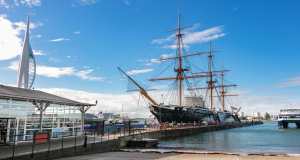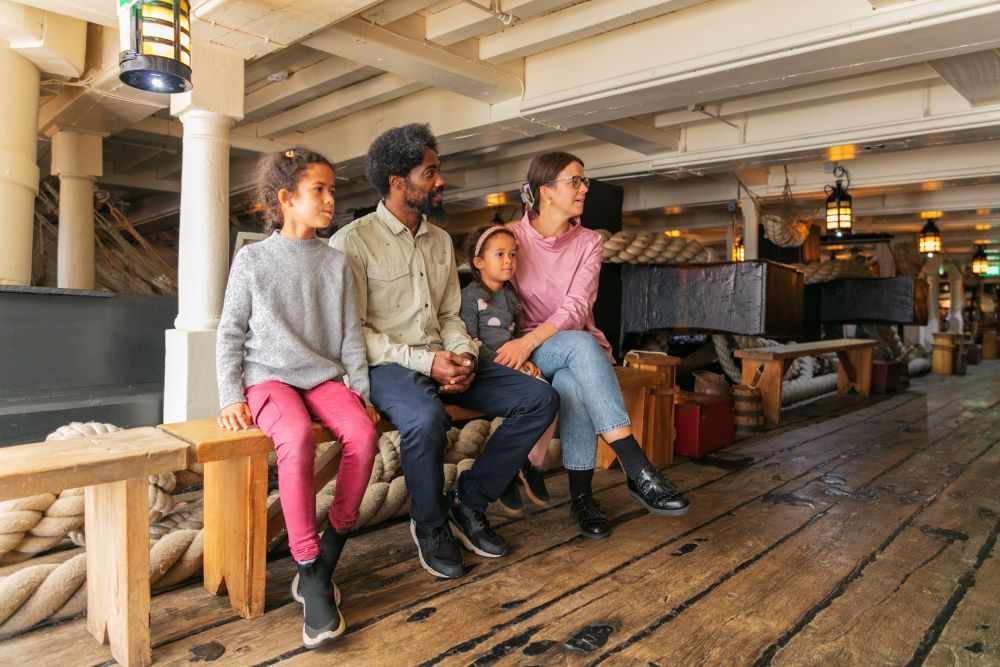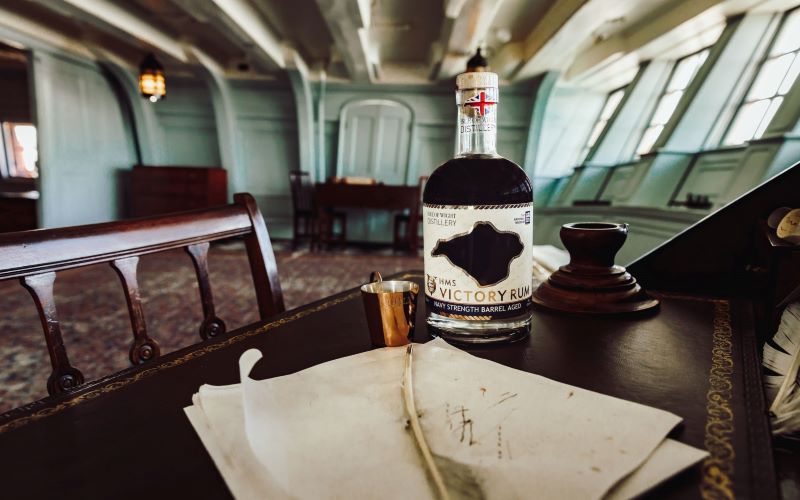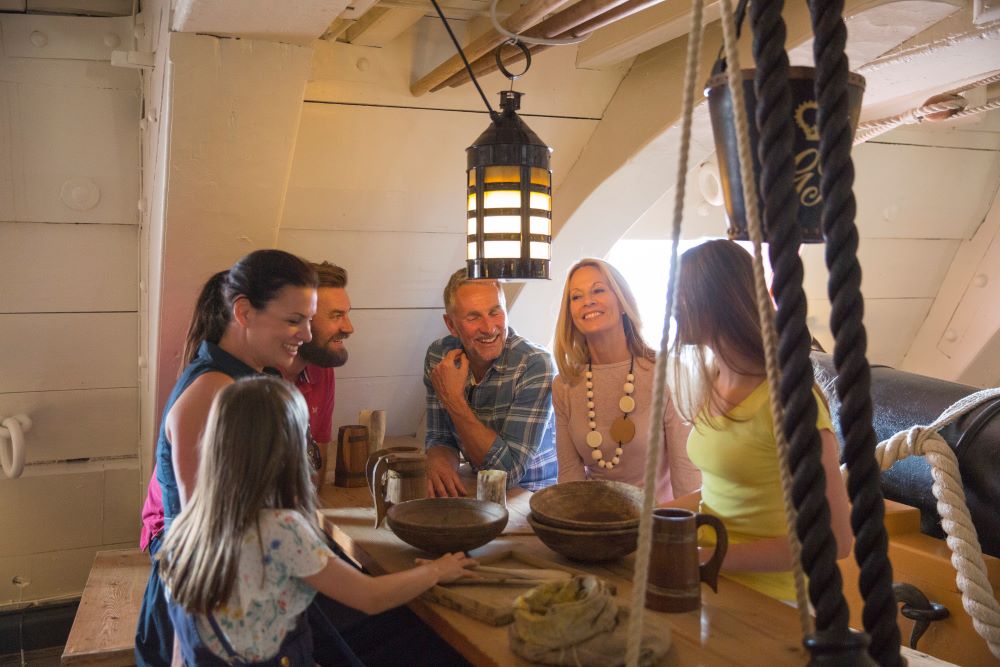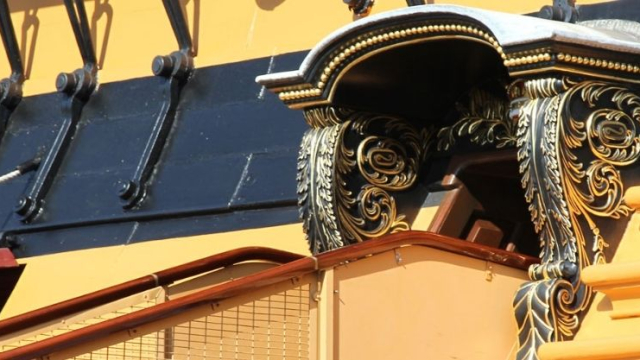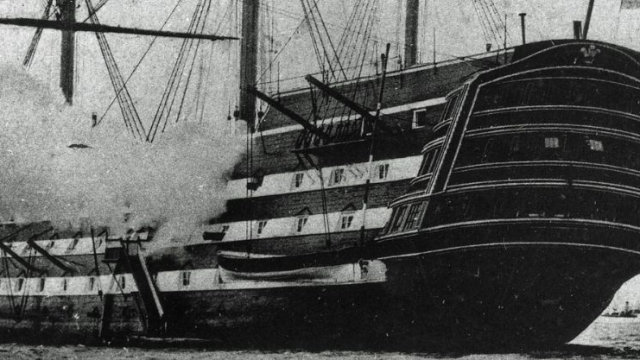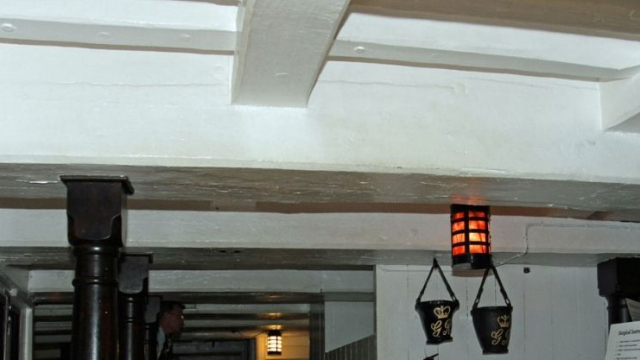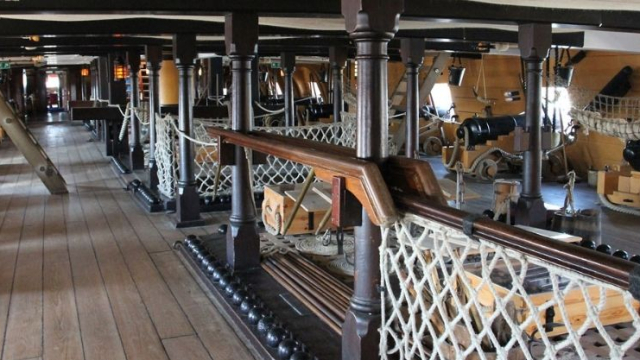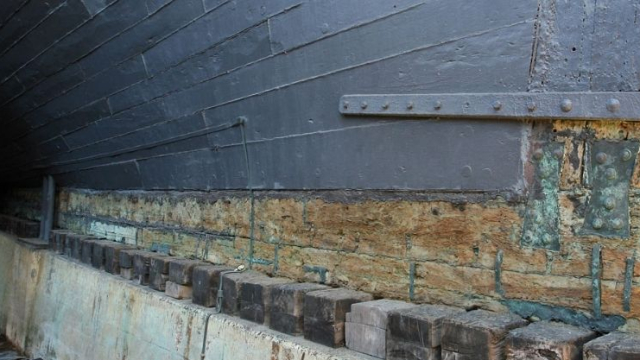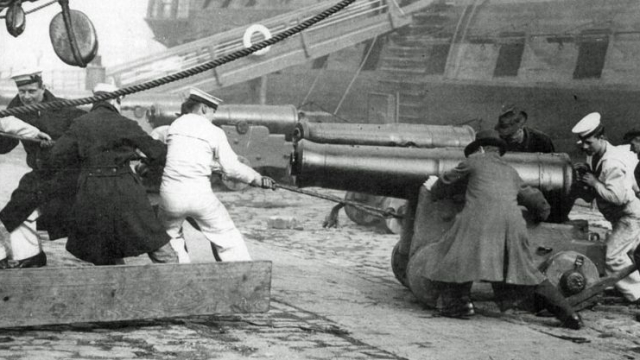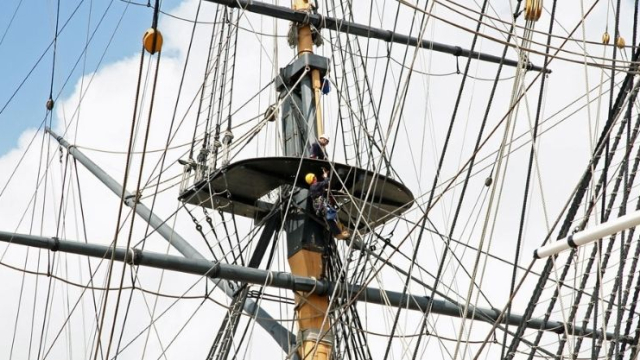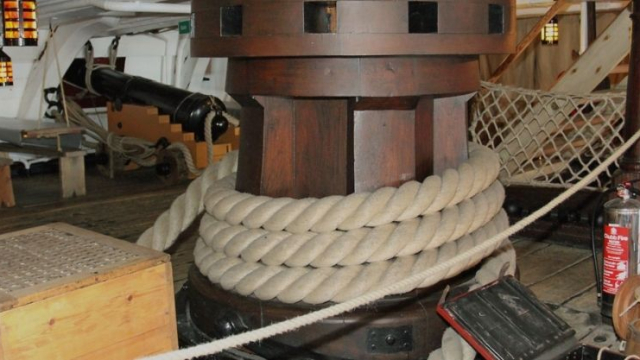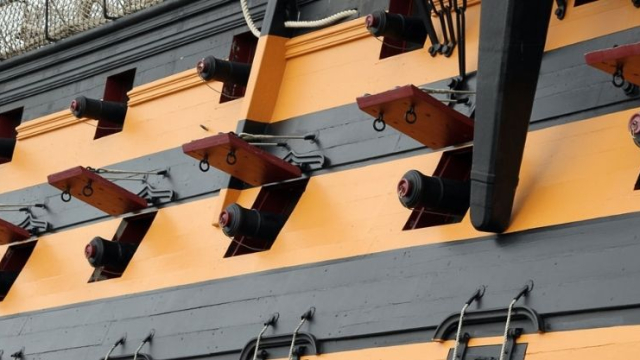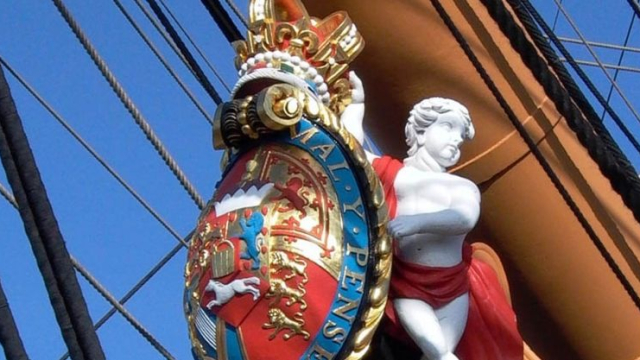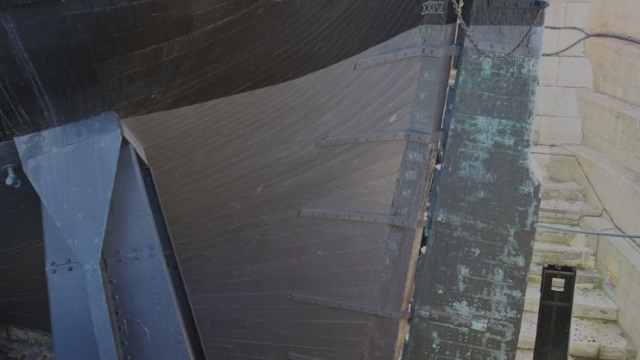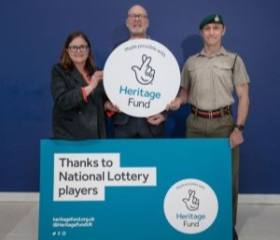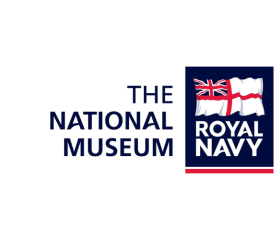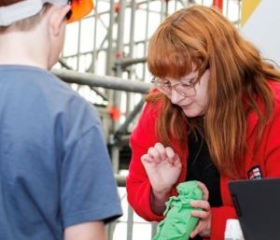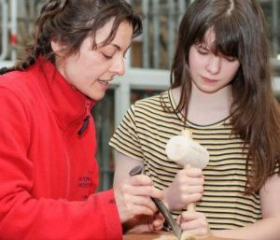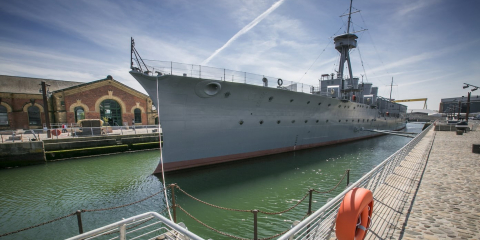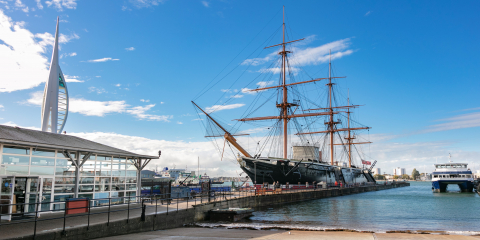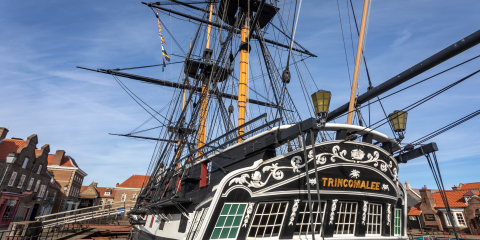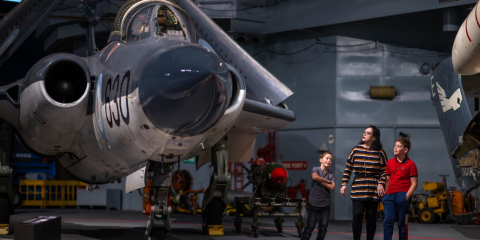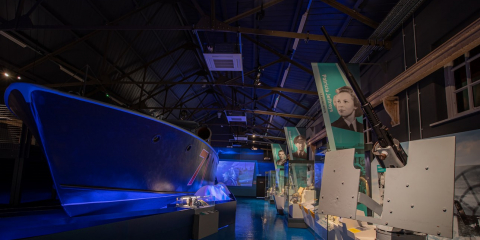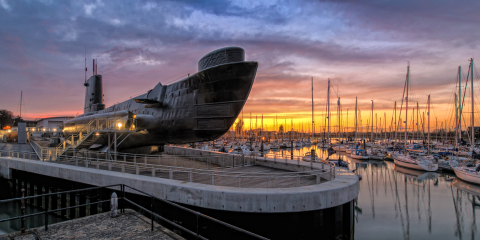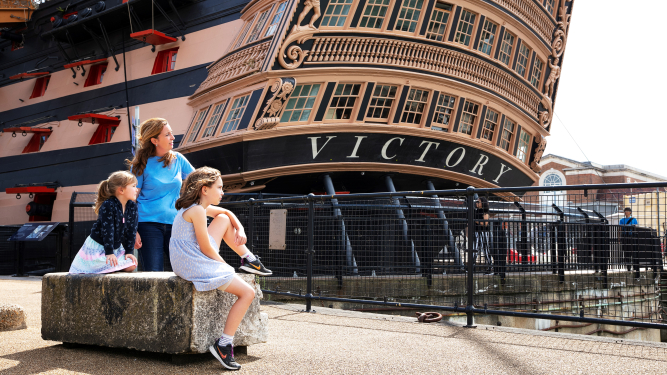
HMS Victory
Climb aboard HMS Victory, an icon of British naval history, and the oldest commissioned warship in the world. Follow in the footsteps of one of the most famous Britons ever, and chart the story of the Battle of Trafalgar to its triumphant conclusion at great personal loss.
Being over two and a half centuries old HMS Victory is a survivor, but it’s only thanks to the tireless efforts of those who have sought to protect and conserve her. Now the National Museum of the Royal Navy has undertaken a multi-million-pound project using groundbreaking technology and specialist skills to ensure she is conserved for generations to come.
Want to learn more about the Battle of Trafalgar and HMS Victory? Climb aboard the ship, tread the decks, learn about the conservation work and enjoy the free audio tour as you explore and scan key points onboard HMS Victory, getting a play-by-play of the battle and Nelson’s final moments.
NOTE: At some times during low season guided tours will be operated on HMS Victory. Details of these can be obtained at the Visitor Centre upon arrival.
HMS Victory
HMS Victory is a first-rate ship-of-the-line, the largest class of ship in the Royal Navy at that time. Today she is decorated as she would’ve been on the eve of the Battle of Trafalgar. At the battle she held 104 guns, totaling over 200 tonnes, and taking up every available space onboard. As you explore, you’ll see not even Nelson’s private cabin was left bare. She was a floating fortress, designed to lead the British fleet into battle.
It’s hard to imagine now as you traverse the wooden walls, but 820 men were onboard at Trafalgar, including Nelson and Captain Hardy, the flag captain of Victory. Most men onboard ate, worked and slept in cramped conditions with stale food. Men were assigned a mess table, where they would eat together and then fold away to lay out their hammocks, keep an eye out for where they would eat and sleep as you explore the ship.
As you explore the ship and scan the various audio tour points onboard, you’ll learn about the key areas onboard. Learn about the harsh punishments for unruly sailors, discover the unsettling world of battlefield medicine in the Georgian era, and literally walk yourself through the various stages of the Battle of Trafalgar.
Two important events from the battle are marked onboard, most prominent is the plaque marking the spot where Nelson first fell while pacing the Quarter Deck. Secondly, deep in the bowels of the ship, a solitary lamp marks the spot where he finally died three hours later on the Orlop deck.
Important conservation work may impact the visitor experience onboard, so visitors are advised to keep an eye out for up-to-date messaging.
HMS Victory: A Remarkable Survivor
Victory Live: The Big Repair
HMS Victory may be undercover, but it gives you a front-row look at the conservation work in action! Victory Live: The Big Repair is the newest addition to the ship, allowing visitors to explore three different viewing platforms. You will get to see under the skin of Victory and maybe even catch our conservation teams in action, as they work hard to ensure she can be enjoyed for generations to come.
This new experience adds to the value of a trip to HMS Victory, follow in the footsteps of Nelson, explore the under-hull walkway experience, and discover groundbreaking conservation in action. To learn more about Victory Live: The Big Repair please visit here.

Plan Your Visit
HMS Victory is open all year round from 10am every day. Portsmouth Historic Dockyard is a great place to bring the family, celebrate birthdays and special occasions. You can also enjoy weekends, holidays, and days off, having quality time out in good company.
Conservation
Ensuring that HMS Victory is conserved for visitors to enjoy has been a top priority for over a century, ever since she entered dry dock in 1922, and the Society for Nautical Research launched the ‘Save the Victory’ Campaign. Following this she was opened formally to the public in 1928 by King George V, and she’s been open for the public to enjoy since.
It’s always been crucial to the museum that HMS Victory can be enjoyed by visitors for years to come. That’s why we’re currently in the middle of one of the largest restoration projects in the UK, with our conservators hard at work peeling back the layers of Victory. Wood is a biodegradable material, so there’s plenty of work to be done to prevent rot, pests, moisture and more.
Related Collections & Conservation
Admiring the collection from HMS Victory is a unique experience. The artifacts, from ship's fittings to personal belongings, offer a tangible connection to the past. Each item tells a story, from the grandeur of naval power to the daily lives of the sailors who served aboard this historic vessel.
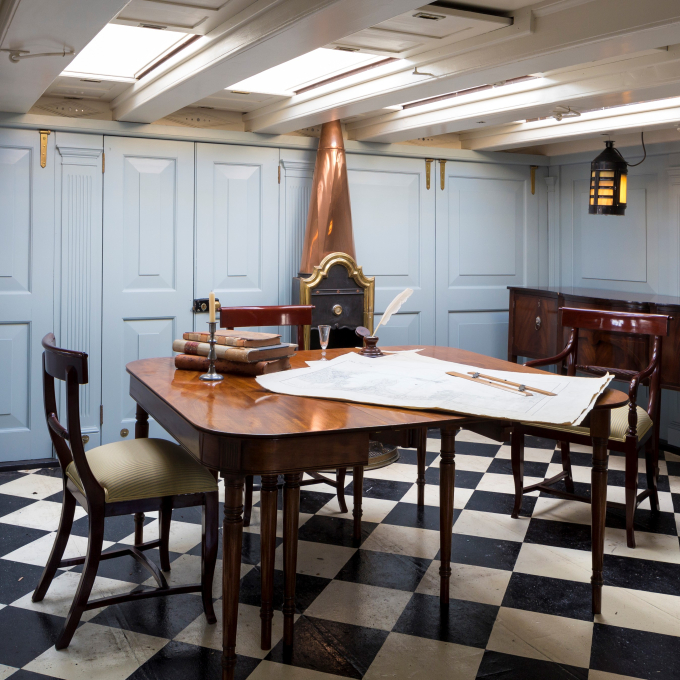
Book Your Tickets Now
Pick from our best value Ultimate Explorer Ticket, Three Attraction Explorer Ticket or the Single Attraction Day Ticket

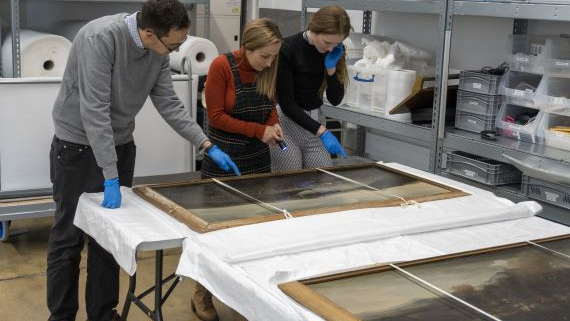
Support us
As a charity, we rely on funding from many sources to preserve the rich history of the Royal Navy

